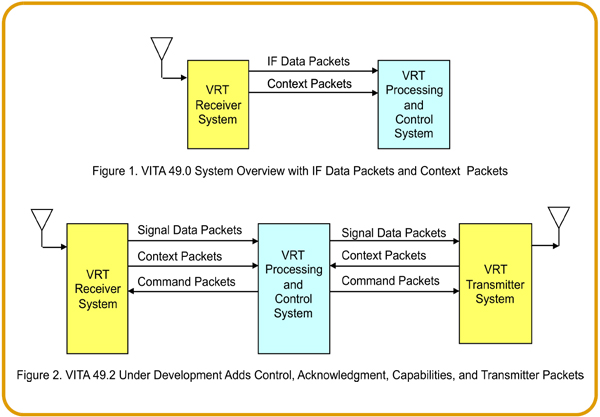Where conventional satellites were earlier tailored to comply with single mission requirements, satellite developers are gradually adapting the vision of software-defined satellites which can be reprogrammed and reconfigured, to allow a satellite to take up new applications and expand its performance. Instead of viewing a satellite as a monolithic piece of hardware and software, designed to perform a specific mission, one can see the same satellite as a platform capable of running multiple different missions (defined as software applications) on the same hardware platform.
This transformation is driven by the ongoing New Space revolution which has planned up to 50,000 active satellites to be in orbit over the next 10 years. All these satellites have complex and variegated sets of orbits and waveforms that satellite communication (SATCOM) networks need to support. This drives the need for SATCOM operators to create flexible and adaptable networks capable of operating on a myriad of different waveforms, orbits, and constellations—while simultaneously maintaining service quality and profitability.
The Digital IF Interoperability Consortium (DIFI) is an independent, international group of companies, organizations and government agencies that have an interest in the interoperability of networks and ground systems supporting space-based operations.
Launched in coordination with the IEEE-ISTO, DIFI’s mission is to enable the digital transformation of space, satellite and related industries through a simple, interoperable Digital IF/RF standard that accelerates industry transformation from L-Band IF to Digital IF, while discouraging vendor lock-in. The mission of the DIFI Consortium is to enable the digital transformation of space, satellite, and related industries by providing a simple, open, interoperable Digital IF/RF standard that replaces the natural interoperability of analog IF signals and helps prevent vendor lock-in.
IF is short for Intermediate Frequency. Rather than having an RF or 70 MHz analog signal as the intermediate frequency, Digital IF provides a digitized sample representation of that same signal. The digitized samples can then be processed entirely in software. In addition, transport of the digitized samples can be over a much longer distance than a traditional RF or baseband analog signal. A Digital IF interface can flow via Ethernet, whether that be a local area network or
possibly even a wide area network. Digital IF allows the majority of that hardware and FPGA firmware processing to be replaced with software.
The founding members of DIFI include Hawkeye 360, Intelsat Corp. (OTCMKTS: INTEQ), Kongsberg Satellite Services AS (KSAT), Kratos Defense & Security Solutions, Inc. (NASDAQ: KTOS), Microsoft, and the U.S. Navy.
Its newest government member, the United States Space Force, Space Systems Command, as well as commercial members Bascom Hunter Technologies, Inc.; ETL Systems LTD; Envistacom; L3Harris Technologies, Inc. Communication Systems Operating Division; and Systems Technologies, Inc. (Systek).
According to Lieutenant Colonel Gary Thompson, Chief of SATCOM Capability Area Integration for the U.S. Space Force Space Systems Command, “The interoperability of equipment and network components is an area of extreme importance for us if we are to realize our goals of space network architectures that are resilient, adaptive and scalable. We look forward to participating actively in DIFI with our colleagues in industry, government and education.”
U.S. Army Specifies DIFI Consortium Standard for EDIM Modem Interoperability
The U.S. Army’s recently published Request For Information (RFI) regarding the PdM WESS for Enterprise Digital IF Multi-Carrier (EDIM) Modem Spec has specified the Digital IF Interoperability’s (DIFI) standard as a requirement. Compliance with the DIFI standard is intended to ensure interoperability with an existing base of commercial equipment and with subsequent emerging SATCOM Digital IF infrastructure equipment. The Army plans to install the EDIM Modem in DOD Joint SATCOM Gateways that access Wideband Global SATCOM (WGS).
DIFI has introduced version 1.0 of an interoperability standard based upon VITA 49, entitled IEEE-ISTO Std 4900-2021: Digital IF Interoperability Standard which can be downloaded at the Consortium’s website https://dificonsortium.org.
VITA 49.0
Innovations in data converter technology, DSP devices, system interconnects, processors, software, design tools, and packaging techniques have improved performance levels and reduced the size, weight, and power consumption of software radio systems. However, the rapid surge in software radio applications spawned ad hoc, proprietary interfaces between the elements in these systems.
Approved as an ANSI standard in 2007, VITA 49.0 represented the first official standard for VRT, but it only defined receiver functions using the VRT IF Data and Context packets. After demonstrating its usefulness by early adopters, system designers wanted to extend its scope to encompass even more elements of software radios. The original VITA 49.0 standard omits support for transmitters, control and status functions, and any signals other than digital IF. To address these shortcomings, VITA 49.2 was initiated with new packet classes represented in Figure 2.

 International Defense Security & Technology Your trusted Source for News, Research and Analysis
International Defense Security & Technology Your trusted Source for News, Research and Analysis


